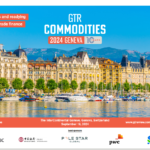Critical Raw Materials Between Security, Sustainability, and Geopolitical Change
In its report of December 13, 2024, on Switzerland’s supply security regarding critical raw materials, the Swiss Federal Council emphasizes the strategic importance of such materials for Swiss industry—particularly for the energy transition.[1] In light of global tensions and the strategic deployment of trade dependencies, the issue of raw material supply is increasingly becoming a security policy concern, as National Councillor Elisabeth Schneider-Schneiter recently pointed out in a parliamentary interpellation.[2]
Raw Materials for “Dual-Use”
Many critical raw materials are so-called “dual-use” materials: they can be used in both civilian and military applications. The energy transition and national defense, in particular, rely on many of the same materials—such as lithium, graphite, gallium, or rare earth elements. These are essential components of modern defense systems (drones, sensors, robotics, guided weapons) and are simultaneously indispensable for key decarbonization technologies (batteries, wind power, electric mobility).
In its Armament Policy Strategy dated June 20, the Federal Council addresses the need to “identify dependencies on suppliers, including in relation to critical raw materials, at an early stage.”[3]
In addition to rapidly increasing global demand, the heavy reliance on a small number of countries that dominate the production and processing of critical raw materials makes supply chains vulnerable. Switzerland imports many of these materials—and particularly semi-finished products made from them—from the EU, which itself sources most of these raw materials from China, the global leader in extraction and processing. These complex supply chains, with multiple points of dependency, raise risks for Switzerland’s supply security, especially given the current volatile geopolitical and economic environment.
Geoeconomic Tensions
Amid international tensions, “dual-use” materials are gaining political sensitivity. The most recent example is China’s export restrictions on certain rare earth elements “to protect national security and fulfill international nonproliferation obligations”—a response to tariffs introduced by the Trump administration[4]—a measure that directly affects Swiss companies as well.[5]
In addition to general licensing rules, U.S. companies active in the defense sector are listed on a “blacklist” and are subject to specific restrictions,[6] which currently change frequently and unpredictably.[7] This clearly illustrates how critical raw materials now serve as geopolitical leverage. For Switzerland, this means risks also exist in non-military applications if supplying countries make distinctions based on end-use. Should the EU, for example, activate prioritization regulations during times of crisis—such as in a defense scenario—Switzerland’s access to key raw materials could be severely restricted.
Conflicting Objectives in Resource Use
How can security policy interests be reconciled with climate policy objectives in the use of limited resources? Since 2024, the EU’s Critical Raw Materials Act defines certain materials as “strategic raw materials.” These are subject to specific targets for local production, recycling, and diversification and are identified by their importance to strategic key sectors: green energy technologies, digitalization, space, and defense.
While the focus areas are clearly outlined, it remains unclear how these sectors will be prioritized against each other. In an acute supply crisis, an implicit or explicit prioritization of defense could significantly delay the civilian energy transition. Conversely, one could argue that the energy transition itself serves as a long-term security measure by reducing geopolitical dependencies, such as on oil imports.
Raw Material Losses and Circular Potential
Another important aspect is dissipation—the irreversible loss of raw materials during or after their use. Defense goods are often produced with high material intensity, have long operational and/or storage cycles, and often escape raw material recovery—either due to systemic unavailability of product information and the products themselves (e.g., classified components) or because of destruction during conflict. In contrast, energy transition technologies and other civilian applications also face recycling challenges, but overall offer better potential for recovery and circular use of raw materials.
This raises the question of to what extent raw material strategies should assess resource efficiency and circularity differently based on sector and application. A purely volume-based view of supply may fall short if usage differences and their implications for recovery potential are not taken into account.
Challenges for Switzerland
The rise of global resource nationalism is reshaping the geopolitical landscape of raw material supply. In addition to the ongoing conflict over resources, technologies, and geoeconomic dominance between the U.S. and China, new developments are emerging—such as supply opportunities from Latin America or Africa, bilateral agreements like the U.S. “Minerals Deal” with Ukraine, and growing international interest in Greenland as a supplier of critical raw materials.
For Switzerland, the key question is: how should it position itself within this new era of resource nationalism? Developing an application-oriented raw material monitoring system that tracks technological pathways in different sectors and identifies potential bottlenecks early could be an important component of a proactive security policy—one that not only recognizes conflicts of objectives but actively addresses them. This could involve participating in international cooperation and building national resilience mechanisms. It might also include promoting innovation and substitution of critical raw materials, as well as expanding a circular economy that is both ecologically sustainable and contributes to securing valuable raw materials.
[1] https://www.parlament.ch/centers/eparl/curia/2020/20203950/Bericht%20BR%20D.pdf
[2] https://www.parlament.ch/de/ratsbetrieb/suche-curia-vista/geschaeft?AffairId=20253188
[3] https://www.vbs.admin.ch/de/bundesrat-ruestungspolitische-strategie
[4] https://www.hklaw.com/en/insights/publications/2025/04/china-imposes-export-controls-on-medium-and-heavy-rare-earth-materials
[5] https://www.nzz.ch/wirtschaft/china-kontrolliert-den-export-von-wichtigen-rohstoffen-schaerfer-jetzt-warnt-die-industrie-vor-versorgungsengpaessen-ld.1887918
[6] https://www.reuters.com/business/aerospace-defense/china-adds-28-us-entities-export-control-list-2025-01-02/
[7] https://www.nbcconnecticut.com/news/business/money-report/china-lifts-export-controls-for-28-u-s-companies-but-not-key-rare-earths/3566334/?os=wtmb5utKCxk5refapp%3Fref%3Dapp&ref=app




